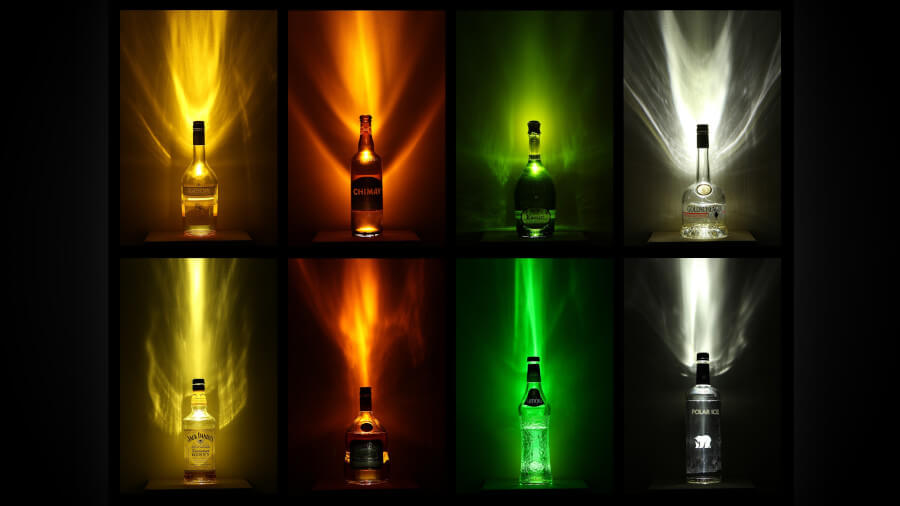The Scotch whisky scene, notably two decades ago, was subtly buzzing. An intriguing question was murmuring among New York City’s whisky lovers: “How smoky can you get?” These peat enthusiasts, humorously dubbed “peat freaks,” were hungry for the smokiest Scotch on the market.
Jonathan Goldstein, co-owner of New York City’s Park Avenue Liquor, recalls the rising tide of interest. “Customers kept asking, ‘What’s the most heavily peated? How much smokiness is available?'” With prominent players like Caol Ila, Lagavulin, Bowmore, and Laphroaig offering a peat level of 40-50 phenol parts per million (PPM), the ceiling of peatiness seemed to have been reached. But was it?
Goldstein, sensing a market opportunity, connected with John Glaser of Compass Box in London. Glaser, known for his innovative spirit, took on the challenge, producing a unique blend that was appropriately labeled ‘Monster’. While this initial iteration set the scene, the true peat game had only just begun.
The Peat Frontier Broadens
Fast forward to 2003, the Bruichladdich Distillery on Islay had embarked on an audacious project: Octomore. This was no ordinary whisky. Aimed squarely at those with an appetite for strong, smoky flavors, Octomore became a vanguard in the super-heavily peated whisky arena. Adam Hannett, current head distiller at Bruichladdich, highlighted the brand’s mission, “It was very much about pushing the boundaries and seeing how much peat we could embed.”
Meanwhile, twenty miles away, Ardbeg Distillery was crafting its smoky masterpieces. Under the guidance of Dr. Bill Lumsden, they unveiled Ardbeg Supernova in 2009, boasting an impressive 100 PPM. Lumsden remarked on the release, “While it wasn’t necessarily my personal preference, I recognized that many Ardbeg fans had a keen interest in tasting whisky as heavily peated as we could produce.”
How Peaty is Peaty?

As interest grew, terms like “PPM,” “phenols,” and “peat” became frequent parlance among whisky lovers. John Glaser, reflecting on the shift, noted, “Now if you’re into Scotch whisky and you appreciate smoky whiskies, you know what PPM stands for.” But what did these numbers mean?
The Bruichladdich Distillery pushed the envelope, releasing Octomore 08.3 2017 with an unprecedented 309 PPM. But with every release, there’s a question: How high can peat levels go?
Adam Hannett mused on the subject, suggesting, “Maybe it’s 309 [PPM]. Perhaps we’ve hit the zenith of what’s possible.” Lumsden, echoing the sentiment, added, “People’s preferences might circle back, leaning towards more refined tastes. However, for the die-hard peat enthusiasts, we’ll always be crafting potent expressions.”
A Worldwide Peat Phenomenon
The peat trend wasn’t limited to Scotland. American distilleries, spotting the popularity surge, started crafting peated bourbons and ryes. The peat trend is more than just a passing phase.
By 2022, the peat race witnessed another milestone. Ardbeg announced its limited-edition Hypernova, peated to a whopping 170 PPM. Dr. Lumsden confidently stated, “For the dedicated peat enthusiasts, we’ll always be creating products of this caliber.”
Other Heavyweights in the Peat Arena
Several whiskies stand out, boasting significant peat levels and unique flavor profiles that have garnered attention. Some other heavyweights in the peat arena:
- Port Charlotte Scottish Barley: Produced by Bruichladdich, Port Charlotte is a robust, smoky malt. Peated to around 40 PPM, it beautifully balances its robust smoke with vanilla and citrus undertones, making it both assertive and elegant.
- Talisker 10-Year-Old: Hailing from the Isle of Skye, this whisky, peated around 25-30 PPM, offers a signature maritime character. While not the highest in PPM, its profile intertwines sea salt, seaweed, and smoke, making it a favorite among those who appreciate coastal smokiness.
- BenRiach Curiositas 10-Year-Old: A Speyside gem, this whisky is unique as peated Speyside whiskies are a rarity. At around 46 PPM, Curiositas offers a blend of sweet fruits and peat smoke, with hints of honey and oak.
- Ledaig 10-Year-Old: Produced by Tobermory distillery on the Isle of Mull, Ledaig is peated to around 30-40 PPM. It’s distinctively known for its sweet smoky flavor, with notes of pepper, brine, and a touch of vanilla.
- Longrow Peated: A product of the Springbank distillery, Longrow Peated is an excellent introduction to smoky whiskies. With no age statement, it carries a peat level of approximately 50 PPM, offering flavors of brine, seaweed, and a lingering smokiness.
- Kilchoman Machir Bay: One of the younger Islay distilleries, Kilchoman’s Machir Bay is peated at around 50 PPM. It offers a well-balanced blend of tropical fruits, vanilla, and an intense smoke finish.
Steps to Seeking Out the Smokiest Whiskey in America

1. Understand Your Palate: Before diving into the realm of smoky whiskies, understand your flavor preferences. If you enjoy flavors like smoked meats, charred wood, or campfire, you’re likely to appreciate a smoky whiskey.
2. Start with Local Liquor Stores: Most local stores will have a designated section for smoky or peated whiskies. Engage with store associates; their knowledge can be a valuable guide.
3. Research Distilleries: While Islay in Scotland is famed for its peated whiskies, several American distilleries are introducing their smoky expressions. Check out distilleries from regions known for smoky spirits, such as certain areas in Texas.
4. Attend Tastings: Many liquor stores, bars, or distilleries host tasting events where you can sample various whiskies. This allows you to compare the smokiness levels side by side.
5. Check Reviews Online: Websites dedicated to whiskey often have reviews discussing the peat levels and smokiness. Platforms like Whisky Advocate or Distiller can offer insights from both experts and enthusiasts.
6. Look for PPM Labels: While it’s more common for Scotch whiskies to label their phenol parts per million (PPM), some American distilleries are also embracing this trend. A higher PPM usually indicates a smokier profile, but remember, other factors like age and cask type can influence the final flavor.
7. Trust Your Taste Buds: Once you’ve sampled a few, trust your palate. What might be intensely smoky for one person could be mild for another. Your preference is the ultimate guide.
8. Broaden Your Horizons: Once you’ve tried a few American smoky whiskies, consider branching out to international brands. Compare and contrast the different nuances each region brings to the table.
Peat Peaks and Valleys
While the “most peated” accolades are undoubtedly impressive, what does this mean for the average American whisky consumer? The reality is, that while peat levels provide an objective measure, the experience of enjoying a heavily peated whisky is deeply subjective. As Goldstein pointed out, “It’s become more common to enjoy smokiness in whisky. Peated whiskies have carved out a niche.”
While peat levels are an intriguing aspect of the whisky world, the true testament to a whisky’s worth is in its taste, balance, and how it resonates with the drinker. Whether you’re a “peat freak” or a casual sipper, there’s a smoky Scotch out there with your name on it.





